|
Stiers Law is proud to announce that Eli Stiers has been recognized by a 2017 Super Star by Attorney At Law Magazine.
Click the link below to read the full interview and learn more about Mr. Stiers, his background, and his law practice. http://www.attorneyatlawmagazine.com/miami/l-elijah-stiers/
0 Comments
Last week, the U.S. House of Representatives passed a bill that caps medical malpractice lawsuits by limiting plaintiff damages to $250,000. The deceptively named Protecting Access to Care Act applies to anyone whose claim is based on care that was provided through a federal program, subsidy, or tax benefit. That includes patients insured under the Affordable Care Act (ACA), veterans, service members, civil servants and Medicare and Medicare beneficiaries.
The bill, H.R. 1215, has yet to come before the Senate, but if it were to become law, it would immediately become the most unprecedented and comprehensively draconian effort at so-called “tort reform” by our federal government in U.S. history. The bill not only places arbitrary caps on pain and suffering damages, but also sets limits on attorneys' fees and imposes a three-year statute of limitations on medical malpractice claims. Rep. Steve King, R-Iowa, a sponsor of the bill, claims that H.R. 1215 is necessary to curb healthcare spending. In reality, the bill does nothing to "curb healthcare costs," "reign in jackpot justice," or any of the other trite canards these politicians will trot out in support of this bill. In reality, medical malpractice claims are on the decline, and have been for some time. Just this year JAMA Internal Medicine published a study finding that the “the overall rate of [malpractice] claims paid on behalf of physicians decreased by 55.7% from 1992 to 2014.” (Source: http://jamanetwork.com/journals/jamainternalmedicine/article-abstract/2612118) Moreover, caps on damages like the ones proposed in H.R. 1215 will provide only a modest reduction in health care costs. (Source: http://www.scpr.org/news/2017/06/29/73382/house-passes-bill-to-cap-pain-and-suffering-payout/) The sad truth is that the “Protecting Access to Care Act” is a scam, concerned more about protecting insurance companies' bottom lines than protecting you, the patient or consumer. Imagine losing a loved one to the negligence of a physician or hospital and being limited to $250,000 in damages for your pain and suffering. Is the value of your child, spouse, mother, or father worth so little in the eyes of these politicians? The short answer is: yes. Insurance companies don't like paying medical malpractice claims no matter how meritorious a claim may be. Private insurance carriers are in the business of collecting premiums and not paying claims unless forced to do so. Paying out money to a medical malpractice plaintiff, no matter how deserving the plaintiff may be, is quite simply bad for their business. So these companies spend millions annually to convince the public that an imaginary medical malpractice crisis exists, and is to blame for the exorbitant costs endemic in our healthcare system. At the same time, they pay a small fortune to lobby the very politicians proposing this legislation, and have a hand in writing the very legislation that will benefit them most. All of this is done at the expense of the public, who is deceived into believing that their elected officials are now acting in their best interests. The White House has already signaled its support of H.R. 1215, and there is no doubt that President Trump will sign the Protecting Access to Care Act into law in the event it passes the Senate. Contact your senator to express your opposition to the H.R. 1215 to truly protect your access to quality and accountable healthcare. Stiers Law excels at the representation of persons injured due to the negligence of doctors, hospitals, nursing homes, long-term care facilities, and other medical providers, including maritime medical malpractice claims against physicians and nurses employed by cruise ship operators. Contact us today for a free consultation. Miami attorney L. Elijah Stiers of the law firm Stiers Law, P.A. has been selected as a Fellow of the Litigation Counsel of America. Mr. Stiers is the founding partner of Stiers Law (www.stierslaw.com) and is an AV-rated trial attorney with fourteen years of experience practicing personal injury litigation. A 1999 graduate of the University of Florida, Mr. Stiers received his Juris Doctor degree from University of Florida Levin College of Law in 2003. He has successfully represented numerous clients in both federal and state courts and has also argued appellate matters before the Third and Fourth District Courts of Appeals for the State of Florida. Mr. Stiers primarily represents persons injured due to the negligence of others, and regularly handles cases involving medical negligence, automobile negligence, premises liability, and negligence by cruise ship operators, and has won millions of dollars in verdicts and settlements on behalf of his clients. The LCA is a trial lawyer honorary society composed of less than one-half of one percent of American lawyers. Fellowship in the LCA is highly selective and by invitation only. Fellows are selected based upon excellence and accomplishment in litigation, both at the trial and appellate levels, and superior ethical reputation. The LCA is aggressively diverse in its composition. Established as a trial and appellate lawyer honorary society reflecting the American bar in the twenty-first century, the LCA represents the best in law among its membership. The number of Fellowships has been kept at an exclusive limit by design, allowing qualifications, diversity and inclusion to align effectively, with recognition of excellence in litigation across all segments of the bar. Fellows are generally at the partner or shareholder level, or are independent practitioners with recognized experience and accomplishment. In addition, the LCA is dedicated to promoting superior advocacy, professionalism and ethical standards among its Fellows. Mr. Stiers is also an energetic and vocal advocate for better access to parks, green spaces, and the rights of cyclists and pedestrians in Miami-Dade County, where he serves as the Chair of the City of Miami Parks and Recreation Advisory Board and on the Citizens Transportation Trust, overseeing a $250 Million annual budget. Stiers Law is pleased to announce that founding partner Eli Stiers has been selected as a member of the Multi-Million Dollar Advocates Forum, one of the most prestigious associations of trial lawyers in the United States.
Membership in the Multi-Million Dollar Advocates Forum is restricted to those attorneys who have won multi-million dollar verdicts and settlements for their clients. The organization has only 4,000 members nationally, and fewer than 1% of all U.S. lawyers nationally qualify for selection. Throughout his career, Mr. Stiers has helped his clients obtain millions of dollars in verdicts and settlements in their personal injury, medical malpractice, and wrongful death cases, consistently demonstrating a proven track record for success. Let Stiers Law fight to get you the results you deserve for your important case. Legal Disclaimer: You should know that the facts and circumstances of your case may differ from the matters in which results have been provided. The results provided are not necessarily representative of all results obtained by the lawyer/firm or of the experience of all clients with the lawyer/firm. Every case is different, and each client’s case must be evaluated and handled on its own merits. Stiers Law, P.A. is pleased to announce that Eli Stiers has been appointed to the Citizens' Independent Transportation Trust (CITT) as a representative of the Miami-Dade County League of Cities.
The CITT is the independent board created to oversee spending of the half-penny transit surtax that Miami-Dade County voters approved in 2002 to finance transit improvements - better known as the People's Transportation Plan (PTP). The Office of the CITT currently receives approximately $250 million annually in surtax revenue to oversee for transit-related spending, and helps envision the future of Miami's transportation needs through its members' use of business or professional knowledge, skills, and experiences. As Miamians know too well, the planned expansion of Metrorail never came to fruition, and the original PTP plans to add six new rail lines and over 88 miles to the Metrorail system never materialized. Meanwhile traffic in Miami-Dade has only gotten worse, with little in the way of relief. Fortunately, a number of exciting transit solutions are on the horizon, and the CITT is playing an integral role in fulfilling the promise of the PTP. From purchasing a new fleet of state-of-the-art Hitachi Metrorail cars, complete with Wi-Fi and integrated bike racks at a cost of $376 million, to the recent completion of the Orange Line extension to Miami International Airport, the CITT is delivering results. What truly excites Stiers, however, is the chance to work on expanding commuter rail service and connecting our community, finally realizing the vision of the original PTP. The newly proposed Strategic Miami Area Rapid Transit (SMART) plan aims to build out the original six lines envisioned by the PTP, in part by using these surtax monies as they were intended. Moreover, the opportunities to participate and capitalize on the construction of several new "big idea" transit projects in Miami-Dade County - including All Aboard Florida, the Tri-Rail commuter expansion to downtown Miami, and the Baylink connection between Miami and Miami Beach - are happening right now. "People are so desperate for transit solutions, these projects are going to be welcomed and I think they'll be wildly successful. Once they come online, it will be like the first dominoes to fall, and everyone is going to want to buy in." says Stiers. An accomplished trial attorney and community advocate, Stiers looks forward to lending his voice to the CITT. "It's an exciting time to be a part of the CITT, as we are going to play a pivotal role in bringing lasting change to our community. The future is now in Miami, and I'm excited to lend my voice and experience to help define that future." MIAMI, FLORIDA – June 24, 2016
Stiers Law, P.A. announces that Super Lawyers has named founding partner L. Elijah Stiers as a “Rising Star" in the State of Florida for the seventh straight year (2010-2016). Super Lawyers are considered the top attorneys in the state with a high degree of peer recognition and professional achievement. Rising Stars are the up-and-coming attorneys in the state who are 40 years old and under, and have been practicing for 10 years or less. “I am proud that Super Lawyers has again granted me the honor of being included in its list of top attorneys in Florida,” says Mr. Stiers. “I look forward to continued successes and to continuing to provide excellent services to my clients.” Only 5% of lawyers in the state of Florida can be recognized as Super Lawyers, while only 2.5% percent are named Rising Stars. Both Super Lawyers and Rising Stars are selected based on a patented selection process, which includes nominations by clients, extensive research on the candidates, and peer reviews. About Stiers Law, P.A. Stiers Law, P.A. is a boutique civil litigation firm located in Miami, Florida that focuses on catastrophic personal injury matters including: medical malpractice, wrongful death, auto negligence, and general liability cases. The firm also handles a variety of business and commercial litigation disputes in state and federal court. Founding partner, L. Elijah Stiers, has been consistently recognized as one of the top young attorneys in Florida and has been selected as a "Top 40 Under 40," a "Rising Star," and an "Up and Comer" by numerous respected legal publications. Mr. Stiers has also been given an AV-Preeminent rating by Martindale Hubbell, the highest designation conferred. About Super Lawyers Super Lawyers is a rating service of outstanding lawyers from more than 70 practice areas who have attained a high-degree of peer recognition and professional achievement. The selection process is multi-phased and includes independent research, peer nominations and peer evaluations. Helpful Resources Florida Super Lawyers Digital Edition L. Elijah Stiers Super Lawyers Profile This is Part I of a two-part blog discussing the recent tragic death of cyclist Annabelle Interian and discussing recommendations for ways to make our streets safer for all.
Our sympathies go out to the family of another Miami cyclist who was killed last weekend while riding in the area of Southwest Miami-Dade County known as the Redland. The cyclist who was killed, Annabelle Interian, was the wife of Miami-Dade Police Lt. Jorge Interian, who was also injured in the crash. Lt. Interian is expected to live. What do we know about this latest tragedy? News reports say the crash happened while the cyclists were “riding through the Redland in deep South Miami-Dade County.” Although remote and rural, as any Miami cyclist can attest, the Redland is a popular cycling destination, widely considered to be one of the few safe places to ride. Indeed, a view of the Strava Heatmap for Miami-Dade County shows that the Redland’s “steps” are some of the hottest routes for cyclists in all of the County. The area is popular, not for the quality of the scenery, topography, or roads, but because it is so remote. The isolation of the Redland, and its separation from the commotion of Miami, is its best quality. On any given weekend at 8:00 a.m., when this fatal collision occurred, cyclists usually outnumber cars. Many weekends I have joined friends for a ride out to Robert is Here or Knauss Berry Farm, with the reward of a fruit smoothie or cinnamon bun waiting for those willing to ride the (approximately) 60 mile round-trip. Sure, I’ve been buzzed by speeding cars near the Speedway more times than I can remember, but by and large you can count the number of cars you see on a trip to the Redland on two hands – more than you can say for almost any other cycling corridor in Miami-Dade County. Unfortunately, like most roads in the suburbs and the peripheries of Miami-Dade County, the roads in the Redland were not designed for cyclists. The asphalt in the Redland is wide, smooth, and designed for the singular goal of moving cars quickly. Make no mistake, these are not complete streets. These roads, like much of Miami-Dade, were built with an undeniable “highway mentality,” meaning that they look and feel like highways. Drivers’ behavior, unsurprisingly, reflects that mentality. Thus, without knowing any more than the fact that this crash happened in the Redland, I can confidently state that road design, and more specifically the speed generated by the road’s design, helped contribute to this fatal crash. I suspect the road where this crash happened was unnecessarily wide and fast, overbuilt for the volume of cars it typically services. I don’t know if the driver was traveling over the speed limit or not, but I suspect she was going at least 40-45 mph, meaning Mrs. Interian had no greater than a 35% chance of survival when struck by the car. If the driver was going 50 mph or more, the chances that Mrs. Interian would survive the crash drop to below 25%. Do the flaws in road design exclude the conduct of the driver, reportedly a young female? Absolutely not. A commenter to the Herald article, who claims to know the driver, claims that she “dropped her phone and lost control of her car and hit the two people.” If true, it would indicate that the driver was certainly negligent in the operation of her vehicle, and was directly responsible for the fatal crash. This deadly mistake with horrific consequences means that the driver will almost certainly be sued in civil court by Mrs. Interian’s survivors for money damages. My firm specializes in handling unfortunate lawsuits like this. As a personal injury attorney and cycling advocate, I am sadly all-too-familiar with the alarming statistics concerning distracted driving, which is now the leading cause of death among American teenagers. Statistics show that, at any given moment in the U.S., 660,000 drivers are texting or using their cell phones. I suspect the actual number is much higher than that. You may think that a quick glance at your phone is harmless, but consider that at 50 mph, your car is moving at 73.3 feet per second, requiring 229 feet to stop. Even a quick glance away from the road for a few seconds means your vehicle -- two tons of moving metal -- has the potential to travel hundreds of feet without you knowing what lies ahead; whether it be a child playing in the street, a pedestrian crossing the roadway, or me riding my bicycle. For these reasons, I say that this latest tragedy was no accident. It was, to the contrary, inevitable. Just the latest in a series of tragedies involving drunk or distracted drivers killing cyclists on Miami-Dade County’s dangerous roads, in and around popular cycling corridors like the Redland and Key Biscayne. This is a perfect and deadly storm, and one of the reasons I know that every time I leave my house to ride in Miami-Dade County, I am taking a risk. We know that Miami's roads are some of the deadliest in the country, because our roads were built when design standards were different, and the County's transportation needs were different. But Miami-Dade County is changing rapidly, and our roads and infrastructure are not keeping pace. More people moving to South Florida means more distracted drivers encountering more cyclists on our outdated roadways. Unless we take strong, decisive action, serious cycling-related injuries and deaths, like the unfortunate death of Annabelle Interian, will continue to happen. Watch this space for Part II, discussing initiatives and strategies to make our streets safer for all. |


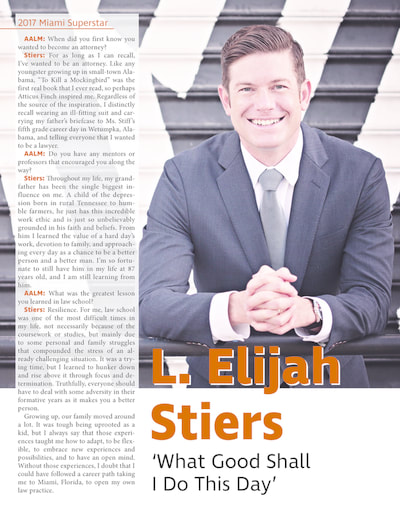
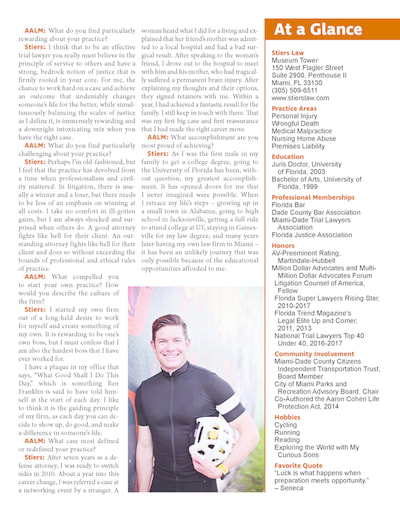

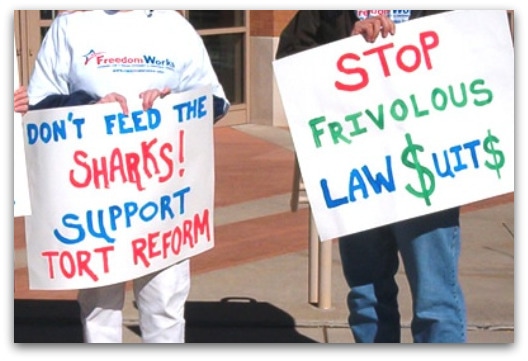




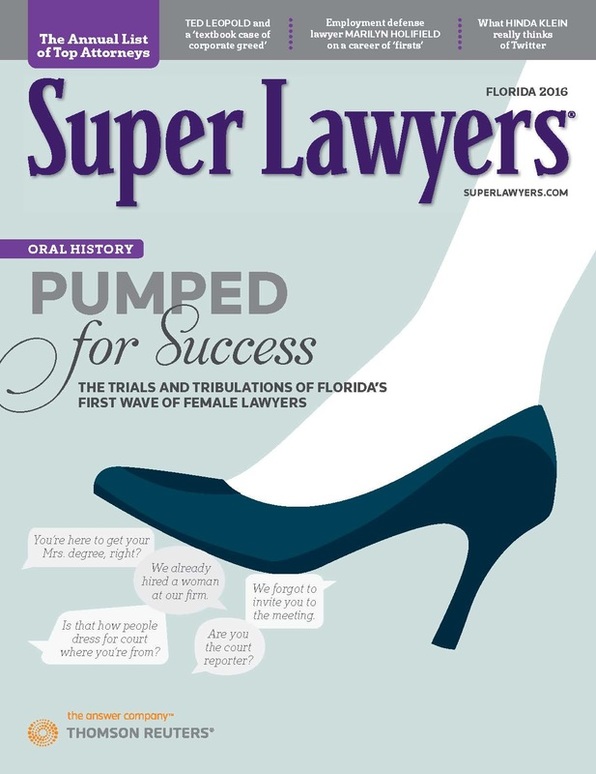
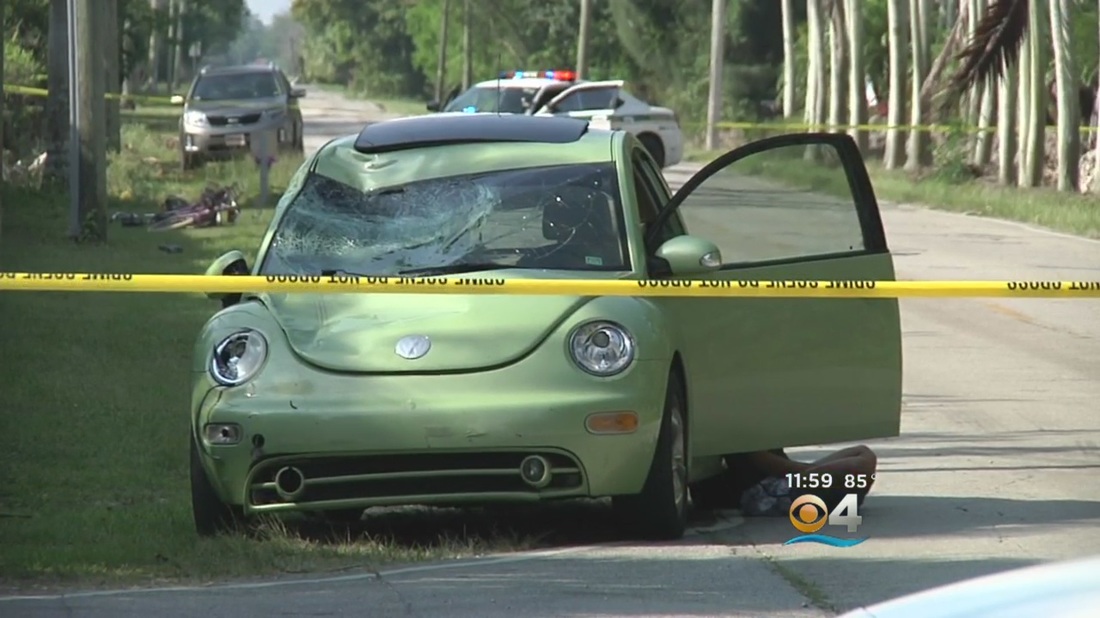
 RSS Feed
RSS Feed





